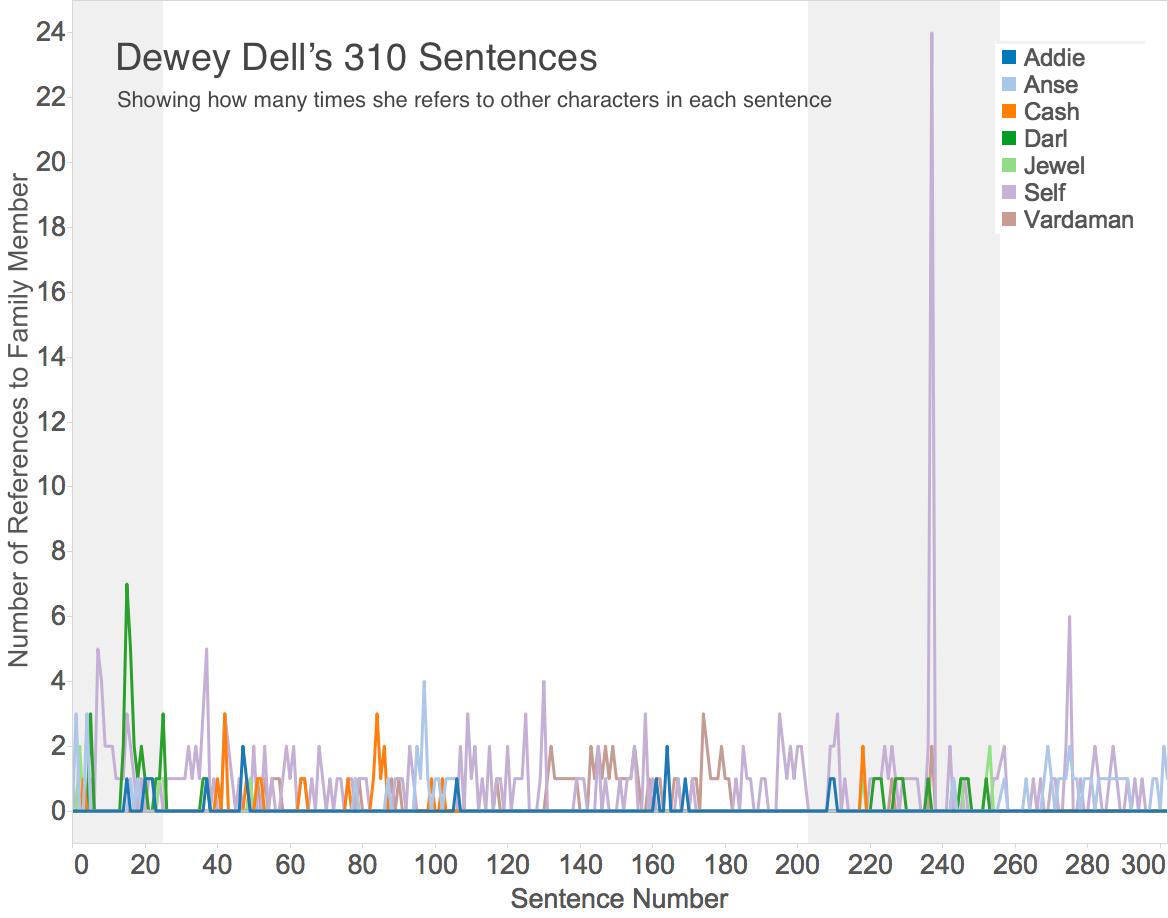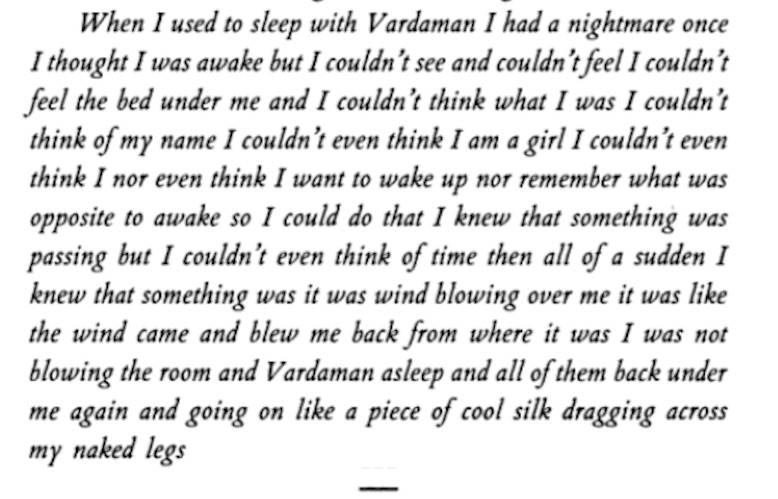Here's one example from the paper. This is a line graph of all 310 sentences in Dewey Dell’s four monologues. Each character she refers to is represented by a different color line, and the y-axis shows how many times she refers to each character in any given sentence. To take just one example, that green spike on the left is Dewey Dell referring to her brother Darl 7 times in the 15th sentence of her first monologue.

Graphing her references in this way reveals an obvious anomaly there at sentence 237, where she refers to herself 24 times. That’s worth looking into, and here is the sentence itself:
 Text of Dewey Dell's 237th sentence.
Text of Dewey Dell's 237th sentence.
Here's what I said about this in my PALA paper:
Well, we can see where all those self-references come from: Dewey Dell is relating her experiences of a past dream. The other observation to make is that this sentence is in italic type, and again it is not uncommon for Faulkner to switch from roman to italic type like this. But now we can see that the sentence of Dewey Dell’s that contains the most self-references is also one of her few sentences that are in italic type. This suggests a correlation between referentiality (that is, the measure of how often a character refers to herself or someone else), and Faulkner’s use of italics. I would argue that referentiality emerges from this analysis as one of the ways that Faulkner heightens the illusion of interior speech in these characters.
This is just a small taste of a 20-minute talk. More recently I've been writing about pronouns in this novel and using James Pennebaker's software, Linguistic Inquiry and Word Count, to analyze the patterns that emerge. I've submitted an article on this topic to a journal for publication and should hear about that early in 2016.
Header image from 2013 film of As I Lay Dying from examiner.com.